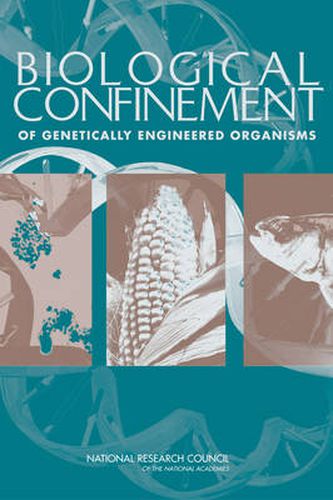Readings Newsletter
Become a Readings Member to make your shopping experience even easier.
Sign in or sign up for free!
You’re not far away from qualifying for FREE standard shipping within Australia
You’ve qualified for FREE standard shipping within Australia
The cart is loading…






Genetically engineered organisms (GEOs) have been under development for more than 20 years while GE crops have been grown commercially during the last decade. During this time, a number of questions have cropped up concerning the potential consequences that certain GEOs might have on natural or managed ecosystems and human health. Interest in developing methods to confine some GEOs and their transgenes to specifically designated release settings has increased, and the success of these efforts could facilitate the continued growth and development of this technology. Biological Confinement of Genetically Engineered Organisms examines biological methods that may be used with genetically engineered plants, animals, microbes, and fungi. Bioconfinement methods have been applied successfully to a few non-engineered organisms, but many promising techniques remain in the conceptual and experimental stages of development. This book reviews and evaluates these methods, discusses when and why to consider their use, and assesses how effectively they offer a significant reduction of the risks engineered organisms can present to the environment. Interdisciplinary research to develop new confinement methods could find ways to minimize the potential for unintended effects on human health and the environment. Need for this type of research is clear, and successful methods could prove helpful in promoting regulatory approval for commercialization of future genetically engineered organisms.
$9.00 standard shipping within Australia
FREE standard shipping within Australia for orders over $100.00
Express & International shipping calculated at checkout
Genetically engineered organisms (GEOs) have been under development for more than 20 years while GE crops have been grown commercially during the last decade. During this time, a number of questions have cropped up concerning the potential consequences that certain GEOs might have on natural or managed ecosystems and human health. Interest in developing methods to confine some GEOs and their transgenes to specifically designated release settings has increased, and the success of these efforts could facilitate the continued growth and development of this technology. Biological Confinement of Genetically Engineered Organisms examines biological methods that may be used with genetically engineered plants, animals, microbes, and fungi. Bioconfinement methods have been applied successfully to a few non-engineered organisms, but many promising techniques remain in the conceptual and experimental stages of development. This book reviews and evaluates these methods, discusses when and why to consider their use, and assesses how effectively they offer a significant reduction of the risks engineered organisms can present to the environment. Interdisciplinary research to develop new confinement methods could find ways to minimize the potential for unintended effects on human health and the environment. Need for this type of research is clear, and successful methods could prove helpful in promoting regulatory approval for commercialization of future genetically engineered organisms.